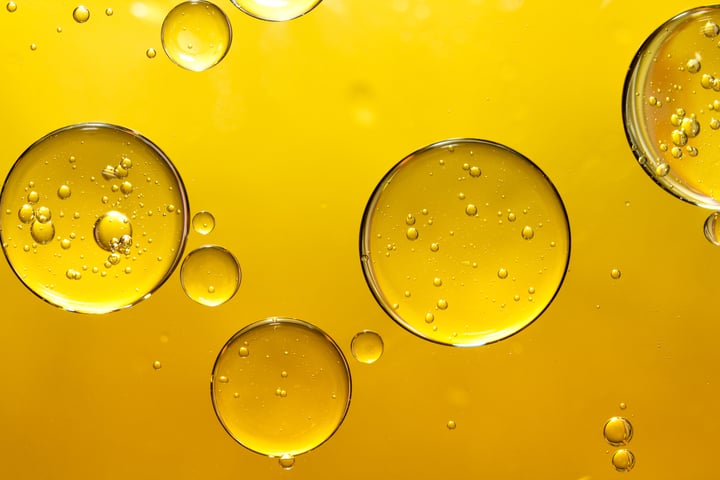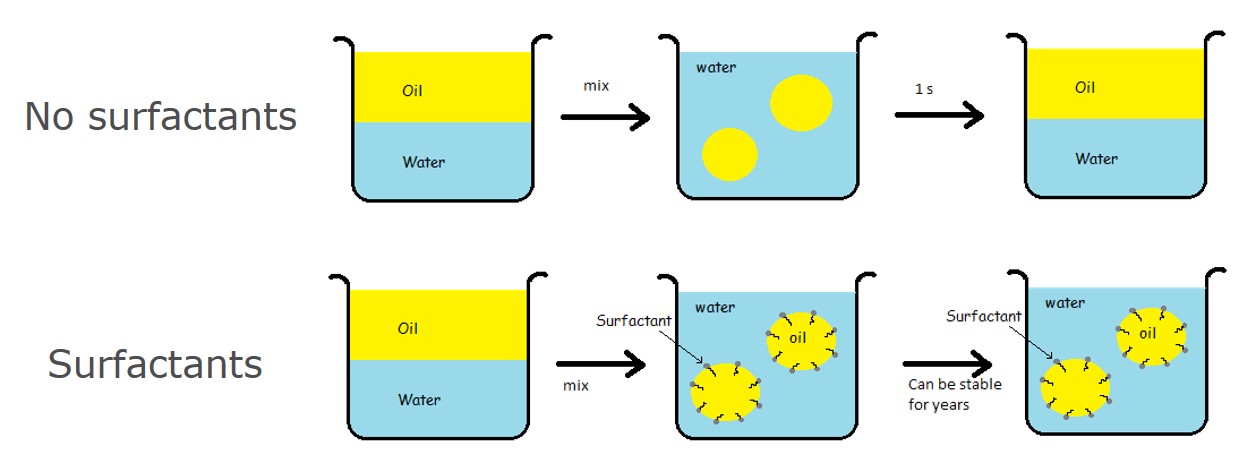
Interfacial rheology studies the flow properties of the interfacial layer that is formed between two immiscible fluids, such as oil and water. The interfacial layer can be composed of any surface-active material such as surfactant, polymers, or even nanoparticles. The behavior of this layer is important especially when studying the stability of emulsions or foams. Interfacial rheology measurements are used for these studies.
When two immiscible fluids, such as oil and water are mixed, the droplets of oil can be seen in water. Quickly after the mixing is stopped, the oil will, however, again separate from water and migrate on top (when the oil is the lighter phase). When surface active material such as surfactant, polymer or even particles are added into the mixture, stable emulsions can be formed. Hydrophilic to hydrophobic balance of the molecule dictate the nature of the emulsions (O/W or W/O) being formed.

There are two mechanisms by which the surface-active molecules are stabilizing emulsions. First, they decrease the interfacial tension between the oil and water. When oil and water are mixed and small oil drops are formed, there is a significant increase in the interfacial area in the system. This will increase the total interfacial free energy and result in thermodynamically unstable system when surfactants are not present. With the addition of surfactants, the total interfacial free energy increase is not as high. In addition, the surfactant molecules will form a mechanical, steric and/or electrical barrier between the droplets and the continuous phase which will decrease coalescence of the droplets.
The properties of the interfacial layer have significant effect on the stability of the emulsion. Surface elasticity has been proposed as one of the parameters that can be used to predict emulsion stability. Interfacial elasticity can be measured by using optical tensiometer equipped with the pulsating drop module.
In the pulsating drop measurement, the volume of the drop is pulsated with the known frequency. The area variation as well as the surface tension change as a function of frequency is detected. This information is used to calculate the surface elasticity.
To read more about how interfacial rheology can be utilized to predict stability of the droplets, please download the case study through the link below.
Emulsions are dispersed systems of two immiscible liquids such as oil and water. Interfacial rheology measurements predict emulsion and foam stability.
The same measurement modes used in bulk rheology are also meaningful in interfacial rheology.
Pickering emulsions utilize solid particles to stabilize the interface between the two immiscible liquids
International Congress on Interfacial Rheology was held in Athens from the 29th of July to the 4th of August 2023.
Foam stability refers to the ability of a foam to maintain its structure and resist collapse over time.
In this blog post, the most common interfacial shear rheology methods are reviewed.
Interfacial rheology studies the response of the interfacial layer to the external stimuli at air-liquid or liquid-liquid interfaces.
Interfacial shear rheology at the gas-liquid or liquid-liquid interface is relevant in a wide range of applications where foams and emulsions are used.
Interfacial rheology is a special branch of rheology that involves studying the unique two-dimensional systems formed at interfaces.
